- Home
- Alison Weir
Traitors of the Tower
Traitors of the Tower Read online
Traitors of the Tower
Alison Weir
CONTENTS
Introduction
1. Lord Hastings (1483) The King’s Loyal Friend
2. Queen Anne Boleyn (1536) ‘I Have a Little Neck’
3. Margaret Pole, Countess of Salisbury (1541) Hacked to Death
4. Queen Katherine Howard (1542) ‘Rose Without a Thorn’
5. Jane Parker, Lady Rochford (1542) The ‘Wicked Wife’
6. Lady Jane Grey (1554) The Nine-Days’ Queen
7. Robert Devereux, Earl of Essex (1601) ‘Strike Home!’
Traitors of the Tower
Alison Weir was born in London, England, and went to the City of London School. Her great love of history started when she read her first novel. Later, she trained as a teacher. She now lives and works in Surrey and her books include Britain’s Royal Families, The Six Wives of Henry VIII and Mary Queen of Scots and the Murder of Lord Darnley. She has also published two novels, Innocent Traitor and The Lady Elizabeth.
Also by Alison Weir
Non-Fiction
Britain’s Royal Families: The Complete Genealogy
The Six Wives of Henry VIII The Princes in the Tower
Lancaster and York: The Wars of the Roses
Children of England: The Heirs of King Henry VIII
1547–1558
Elizabeth the Queen
Eleanor of Aquitaine
Henry VIII: King and Court
Mary Queen of Scots and the Murder of Lord
Darnley
Isabella: She Wolf of France, Queen of England
Katherine Swynford: The Story of John of Gaunt and
His Scandalous Duchess
The Lady in The Tower: The Fall of Anne Boleyn
Fiction
Innocent Traitor
The Lady Elizabeth
Traitors of the Tower
Introduction
In the Tower of London, between 1483 and 1601, seven famous traitors lost their heads. Visitors are often drawn to the scaffold site on Tower Green where they are said to have died. In fact, five were put to death in a different place within the Tower, in front of what is now the Waterloo Barracks.
This book tells the grim and tragic stories of the traitors who died in the Tower.
Chapter One
Lord Hastings (1483) -The King’s Loyal Friend
Lord Hastings was the loyal friend of King Edward IV, the first monarch of the House of York. He helped Edward all his life, and shared his tastes for women and good food. Born around 1431, he came from a good Yorkshire family that had long supported the House of York against the House of Lancaster during the Wars of the Roses. In 1461 he had fought for Edward at the Battle of Towton, which gained Edward the throne. Hastings was given his title, vast lands and a seat on the royal council. He was also made a Knight of the Garter. He married Katherine, the sister of Warwick, ‘the King-Maker’, the man who had helped set Edward up as king.
Hastings was well liked by all. People praised his sense of duty, his charity and his love of the arts. He had great power and wealth, more than many of higher rank, and people only got to see the King with Hastings’ favour. But his power, and his wenching with the King, earned him the hatred of the Queen, Elizabeth Wydeville. Her family were his rivals for royal favour, and his deadly foes. Hastings was also rivals with Lord Dorset, the Queen’s elder son, for the love of Elizabeth Shore, the King’s mistress.
In April 1483, Edward IV died at the early age of forty-one. On his deathbed, he ordered Hastings, the Queen and Dorset to make peace, which they made a show of doing. Edward’s son and heir was just twelve years old, so in his will he named his brother, Richard, Duke of Gloucester, as Lord Protector while the boy was too young to rule. But Gloucester was in the north, and after Edward had died, the Queen tried to seize power. Hastings was well aware that she might now take revenge on him, but his main concern was for the new young King, Edward V.
Edward V was then at Ludlow Castle on the Welsh border. As Prince of Wales, he had been learning how to rule his subjects. The Queen sent for him to come to London at once to be crowned. She wanted a great army to escort him, but Hastings thought this might provoke trouble and bloodshed. He won the day with threats against the Queen’s family, the Wydevilles, and so only a small escort went with the young King.
Gloucester too feared the Wydevilles, who had not told him of his brother’s death. He learned of it from Hastings, who also wrote that the Queen meant to remove him from power. He told Gloucester to hurry to London with a strong force of men, and to take Edward V into his care on the way. Hastings added that he himself was in danger from the Queen’s party, and he could not wait for Gloucester to reach London.
Gloucester, wearing black for his brother, rode south at once with three hundred men. At Northampton, he met up with his ally, the Duke of Buckingham, and a large force. In London, Hastings told the royal council that the humble blood of the Queen and her family made them unfit to rule, and that Gloucester should govern the realm. This earned him no credit with the Wydevilles.
At Stony Stratford, Gloucester and Buckingham met up with Edward V and his escort, which was led by Earl Rivers, the Queen’s brother, and her younger son, Sir Richard Grey. Gloucester and Buckingham seized the King, arrested Rivers and Grey, who were put in prison, and then rode on to London with a very shocked Edward V.
The power of the Wydevilles had been broken at a stroke. The Queen, in great fear, now took sanctuary in Westminster Abbey with her younger son, Richard, Duke of York, and her five daughters. Hastings sent a message to assure her that all would be well, but she did not believe it. He had done his best to destroy her, she said.
London was in an uproar. Hastings tried to restore calm by telling the council that Gloucester had been faithful to the dead King, Edward IV, and would now be true to Edward’s son. He had only arrested Rivers and Grey for his own safety. In saying this, Hastings turned many people against the Wydevilles. But there were some on the council who were wary of Gloucester’s cunning.
Soon after arriving in London, Gloucester was in complete control of the young King and the country. He got rid of the Queen’s friends on the council, and sent Edward V to live in the palace in the Tower of London. The Tower was not yet known as a prison. Edward IV had held court there many times, and it was usual for a king to spend the days before his crowning at the Tower.
Hastings was pleased to see Gloucester in charge, and keen to do all he could for him. He showed much joy at this ‘new world’, which had been won without one drop of blood being shed.
But Gloucester knew he would never be safe. The young King was his mother’s son, and it would only be a matter of time before he turned on his uncle. For his own safety, Gloucester had to make a bid for the throne itself. Some people thought he had plotted that all along.
Hastings was now part of Edward V’s small court in the Tower, helping the boy to learn how to rule. It was perhaps at this time that the young King gave him the fine book known as ‘The Hastings Hours’, which is now in the British Library in London. Gloucester kept Hastings in the important positions he had held under Edward IV, but there was no reward for helping him gain power. Gloucester ‘loved him well’, but he liked and trusted Buckingham more. He knew that Hastings was deeply loyal to Edward V, and would block any move to depose him. In Gloucester’s mind Hastings was now an enemy.
On the face of it, all seemed well. Hastings had no reason to doubt Gloucester. But Lord Stanley, who did not trust Gloucester, warned him to be careful. Then Buckingham sounded out Hastings on how he would act if Gloucester claimed the throne. Hastings used ‘terrible words’, saying he would accept him as Protector for Edward V, but never as king – an
d sealed his own doom.
Hastings was alarmed to learn that Gloucester was aiming for the crown. He may have warned Edward V of what was afoot. He sought help from other lords of the council. He spoke of seizing the King by force and removing Gloucester. He even tried to gain the support of the Queen, though she had no power to help. But before Hastings could act, Gloucester found out what was going on. He chose to believe that Hastings was plotting his death. He needed to make a case for getting rid of this upright man who stood in his way. As one writer put it, he ‘rushed headlong into crime’.
On 10 June 1483, Gloucester wrote to powerful people in the city of York asking for aid against the Queen’s family and friends. There can be no doubt that he was thinking of Hastings. He added that these people ‘daily do intend to murder and destroy us and the old royal blood of this realm’. He then sent orders for Rivers and Grey to be put to death, ‘so as to leave no danger to himself from any quarter’.
Three days later, Hastings was among those called by Gloucester to a council meeting in the Tower of London. They thought they had been brought there to discuss the crowning of Edward V. Gloucester arrived smiling, and chatted with the lords in a friendly manner. After asking the Bishop of Ely to send him some fruit from his garden, he left them to debate state matters. But he had laid his plans with care and cunning.
An hour or so later, Gloucester came back, in an angry mood. He was ‘frowning, fretting and biting his lips’. He sat silent for a while, then glared at Hastings.
‘What do men deserve for plotting the death of me?’ he asked. Hastings said that if they had done such a wicked thing, they were worthy of just punishment.
‘If?’ cried Gloucester in a fury, rising to his feet. ‘I tell you, they have done it, and I will make good upon your body, traitor!’ He then accused four other men in the room of being traitors to him, even though crimes against a lord protector were not in fact treason. He said they had plotted with the Queen against his rule and his life. A later tale had him crying that the Queen and Elizabeth Shore had caused his arm to wither by using witchcraft, but there is no proof that he had a withered arm. He did shout that an ambush had been set to trap him.
His victims had no chance to reply. Armed guards had been hiding in the next room, and when Gloucester banged his hand on the table, they burst in, yelling, ‘Treason!’ There was a sharp scuffle, which ended in the arrest of Hastings and four others.
Gloucester told Hastings he had better see a priest at once and confess his sins, ‘for I will not dine until I see your head off!’ Hastings realised he was going to die within minutes. There was no trial, and there can be no doubt that Gloucester was acting outside the law. It was the right of a lord to be tried by his fellows, but Gloucester dared not risk a trial because Hastings knew too much about his plot to seize the throne. In fact, this was the start of Gloucester’s rule by terror.
He paid no heed to Hastings’ pleas for mercy. Nor did Buckingham, whom Gloucester put in charge of the doomed man. A priest was summoned, but was not allowed much time to give the last rites. Then Hastings was dragged by an usher to ‘the green beside the chapel in the Tower’. There he was made to kneel by a block of wood left by some workmen, and an usher struck off his head with a sword. Edward may even have been watching, for the windows of his rooms faced Tower Green
‘Thus fell Hastings, killed not by those enemies he had always feared, but by a friend whom he had never doubted.’ And so Edward V lost his best friend. People were sad and shocked to hear of Hastings’ death. When Rivers and Grey too were killed without trial, and the little Duke of York was forced to join his brother in the Tower, they woke up to the fact that Gloucester was bent on taking the throne.
Without the loyal Hastings to defend him, Edward V was declared a bastard and deposed. He and his brother, the two ‘Princes in the Tower’, were never seen again. On 26 June 1483, less than two weeks after Hastings died, Gloucester became king, as Richard III.
Hastings was buried in the fine chantry chapel built for him in St George’s Chapel at Windsor, near the last resting place of his great friend, King Edward IV. His tomb can still be seen there today.
Chapter Two
Queen Anne Boleyn (1536) - ‘I Have a Little Neck’
On 29 January 1536, Anne Boleyn, Henry VIII’s second wife, lost a baby son, born dead after four months. This was her fourth child, but the only one still living was a girl, Elizabeth, born in 1533. In Tudor times, no one thought a woman might be a powerful ruler, as Elizabeth later was, and the King had long wanted a son to succeed him on the throne. Now, to his ‘great distress’, that son had been born dead.
Henry VIII had hoped for a boy from his first wife, Katherine of Aragon, but of her six children, all had died young except a daughter, Mary. By 1526, the King had fallen madly in love with her lady-in-waiting, Anne Boleyn. Anne had dark hair and eyes, and she was clever and witty. Henry wrote ardent love letters to her, and begged her to be his mistress, but she kept him at bay, holding out for marriage.
In 1527, Henry asked the Pope to end his marriage to Katherine. But the Pope did not want to offend Katherine’s mighty nephew, the Emperor Charles V, so he held back. After six years of waiting in vain for the Pope to speak, Henry broke with the Church of Rome and made himself Head of the Church of England. In 1533, he married Anne and had his union with Katherine declared null and void. By then, he was forty-two and his need for a son was urgent.
But in the three years that followed his secret wedding to Anne Boleyn, Henry was not a kind husband. His ‘blind passion’ had not lasted, and he had turned to other women, telling Anne to ‘shut her eyes as her betters had done’. Now he was chasing after her maid, Jane Seymour, and Anne had borne a dead son. Yet it does not seem that the loss of her child was the main cause of her downfall. She was hated by the people, and by many at court, who were doing their best to get rid of her.
Chief among them was Henry’s minister, Thomas Cromwell, who was ‘ready at all things, evil or good’. Clever and ruthless, he was ‘the King’s ear and mind’. Cromwell had once been Anne’s friend, but they had fallen out. She did not agree with him on many things, and feared that his growing power was a threat to her. They were now rivals, and she had even said ‘she would see his head cut off’.
Anne’s downfall has long been seen as the result of a failed marriage. It is often thought that Henry VIII had tired of her and asked Cromwell to make a case for getting rid of her. Yet it seems that it was Cromwell, not Henry, who was the man behind her overthrow.
Cromwell was later to admit that ‘he had thought up and plotted the affair’. He had good reason: Anne had regained the King’s favour, and had made it clear to all that ‘wicked ministers’ should be hanged. This came at a time when Cromwell had angered Henry. Plainly, he feared it would be his neck, or hers.
Cromwell built his case on the King’s fear of treason and the Queen’s teasing nature. Anne had failed to give the King a son. She had proved unfit to be a queen, with her temper and her moods. She was hated by the people, and Catholics did not see her as the King’s true wife. More to the point, she was known to enjoy flirting with the men in her circle. For years there had been lewd gossip about her. It would not be hard for people to believe that a woman who had slept with the King before their marriage could have affairs after it.
Cromwell quizzed many who knew Anne, and found evidence against her. We know very little about it, but he was able to build a strong case. It seems that Cromwell showed Henry VIII things he could not ignore.
On 2 May 1536, Anne was arrested for treason at Greenwich Palace and taken by barge to the Tower of London. Entering the Tower, she was in a frail state. She ‘fell down on her knees’, begging God to help her ‘as she was not guilty’. She knew it was rare for anyone accused of treason to escape death.
Sir William Kingston, the Constable of the Tower, led her away.
‘Mr Kingston, do I go into a dungeon?’ Anne asked.
Kingston
told her no, she would be held in the Queen’s Lodgings in the palace.
‘It is too good for me!’ Anne cried. ‘Jesu, have mercy on me!’
In her gilded prison, Anne veered from tears to laughter. She could not believe that the King meant her any real harm. She was well treated, but four ladies had been set to spy on her and report all she said. In her distress, she made some very suspect remarks that would be used against her.
While Anne was in the Tower, the King would not see anyone or appear in public. Yet he was seen sailing along the Thames in his barge at night, with ladies by his side and music playing. He had his new love, Jane Seymour, brought to a house by the river and he visited her there. She was now as richly dressed and treated as if she were queen already.
At dinner with a bishop, Henry told the guests that he had seen all this coming, and believed that more than a hundred men had slept with Anne. One envoy wrote, ‘You never saw a prince or husband make greater show of his horns.’
A week after Anne’s arrest, two lists of charges were drawn up against her, accusing her of adultery with five men. Three were friends of the King, while one, Mark Smeaton, was a lute player. That was shocking enough, but the fifth man was Anne’s own brother, George Boleyn, Lord Rochford. His wife, Jane, Lady Rochford, had given so-called ‘proof’ of incest. It seemed George Boleyn had once been alone with Anne and that he had kissed her. Anne was also said to have plotted the King’s death so that she could marry one of her lovers and rule England with him.
Only Smeaton pleaded guilty. Anne and the rest would maintain their innocence. But on 12 May, all the men except George Boleyn were tried in Westminster Hall and condemned to death.
Three days later, at a show trial in the great hall of the Tower, watched by three thousand people, the Queen was tried by twenty-six lords. Her own father seems to have been among them. Never before had a queen of England been brought to trial. It caused a great stir, and much scandal.

 Richard III and the Princes in the Tower
Richard III and the Princes in the Tower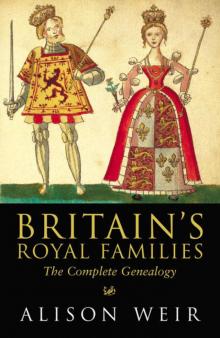 Britain's Royal Families: The Complete Genealogy
Britain's Royal Families: The Complete Genealogy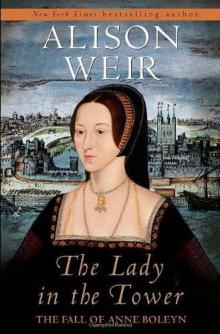 The Lady in the Tower: The Fall of Anne Boleyn
The Lady in the Tower: The Fall of Anne Boleyn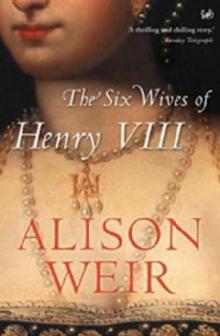 Six Wives of Henry VIII
Six Wives of Henry VIII Elizabeth of York: A Tudor Queen and Her World
Elizabeth of York: A Tudor Queen and Her World Captive Queen
Captive Queen Innocent Traitor
Innocent Traitor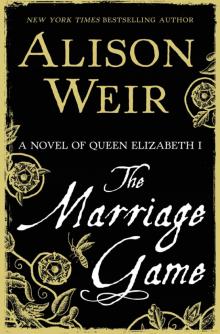 The Marriage Game
The Marriage Game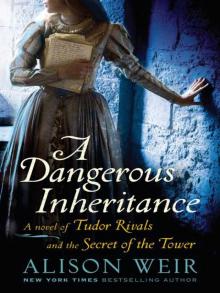 A Dangerous Inheritance
A Dangerous Inheritance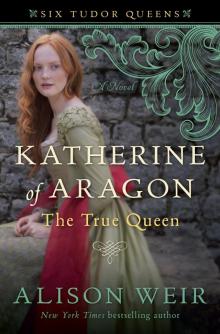 Katherine of Aragón: The True Queen
Katherine of Aragón: The True Queen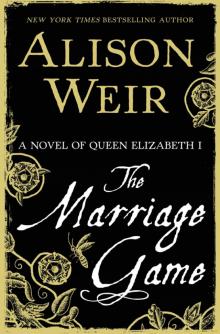 The Marriage Game: A Novel of Queen Elizabeth I
The Marriage Game: A Novel of Queen Elizabeth I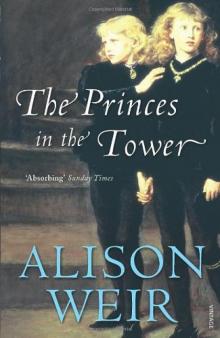 Princes in the Tower
Princes in the Tower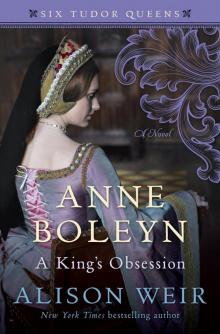 Anne Boleyn: A King's Obsession
Anne Boleyn: A King's Obsession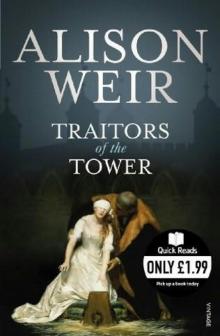 Traitors of the Tower
Traitors of the Tower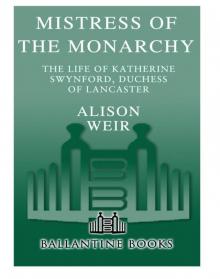 Mistress of the Monarchy: The Life of Katherine Swynford, Duchess of Lancaster
Mistress of the Monarchy: The Life of Katherine Swynford, Duchess of Lancaster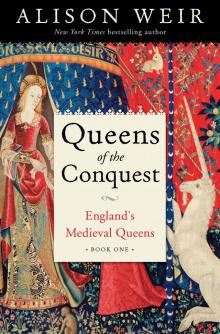 Queens of the Conquest: England’s Medieval Queens
Queens of the Conquest: England’s Medieval Queens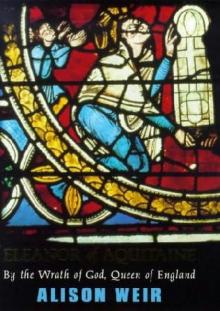 Eleanor of Aquitaine: A Life
Eleanor of Aquitaine: A Life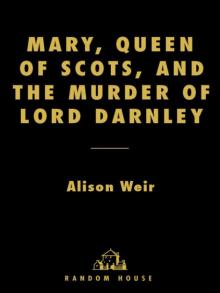 Mary, Queen of Scots, and the Murder of Lord Darnley
Mary, Queen of Scots, and the Murder of Lord Darnley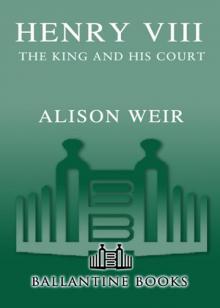 Henry VIII: The King and His Court
Henry VIII: The King and His Court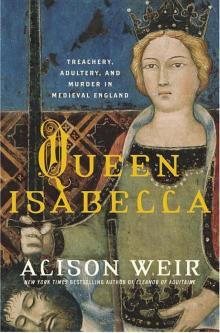 Queen Isabella: Treachery, Adultery, and Murder in Medieval England
Queen Isabella: Treachery, Adultery, and Murder in Medieval England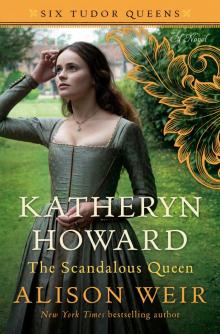 Katheryn Howard, the Scandalous Queen
Katheryn Howard, the Scandalous Queen Arthur- Prince of the Roses
Arthur- Prince of the Roses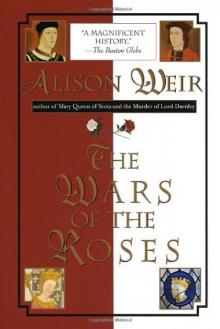 The Wars of the Roses
The Wars of the Roses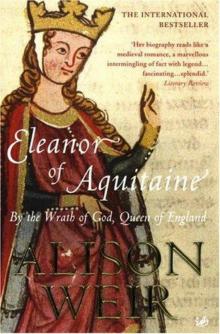 Eleanor of Aquitaine: By the Wrath of God, Queen of England
Eleanor of Aquitaine: By the Wrath of God, Queen of England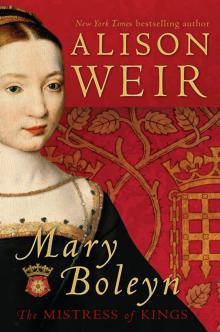 Mary Boleyn: The Great and Infamous Whore
Mary Boleyn: The Great and Infamous Whore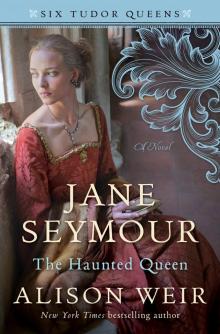 Jane Seymour: The Haunted Queen
Jane Seymour: The Haunted Queen Anna of Kleve, the Princess in the Portrait
Anna of Kleve, the Princess in the Portrait Lancaster and York: The Wars of the Roses
Lancaster and York: The Wars of the Roses The Grandmother's Tale
The Grandmother's Tale The Princess of Scotland (Six Tudor Queens #5.5)
The Princess of Scotland (Six Tudor Queens #5.5)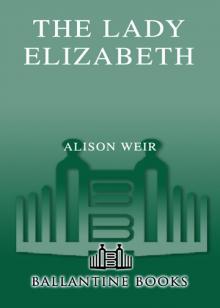 The Lady Elizabeth
The Lady Elizabeth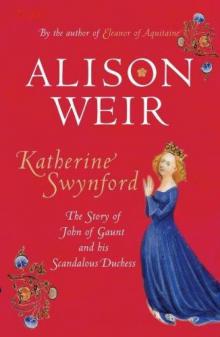 Katherine Swynford: The Story of John of Gaunt and His Scandalous Duchess
Katherine Swynford: The Story of John of Gaunt and His Scandalous Duchess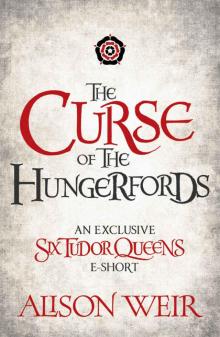 The Curse of the Hungerfords
The Curse of the Hungerfords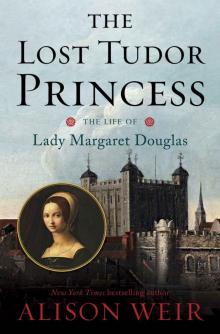 The Lost Tudor Princess: The Life of Lady Margaret Douglas
The Lost Tudor Princess: The Life of Lady Margaret Douglas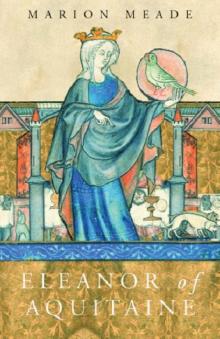 Eleanor of Aquitaine
Eleanor of Aquitaine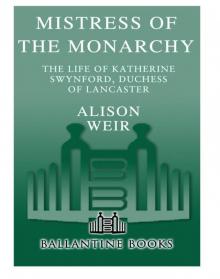 Mistress of the Monarchy
Mistress of the Monarchy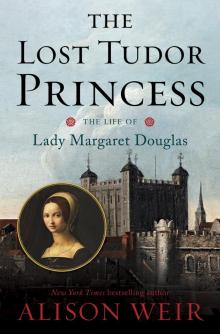 The Lost Tudor Princess
The Lost Tudor Princess Henry VIII
Henry VIII Anne Boleyn, a King's Obsession
Anne Boleyn, a King's Obsession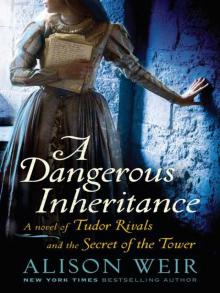 A Dangerous Inheritance: A Novel of Tudor Rivals and the Secret of the Tower
A Dangerous Inheritance: A Novel of Tudor Rivals and the Secret of the Tower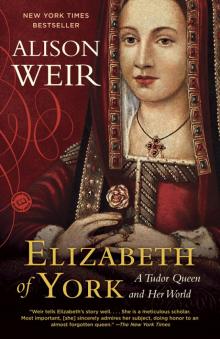 Elizabeth of York
Elizabeth of York Katherine of Aragon, the True Queen
Katherine of Aragon, the True Queen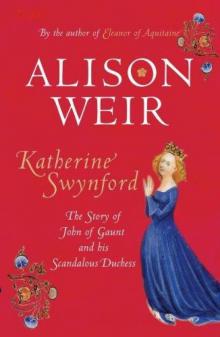 Katherine Swynford
Katherine Swynford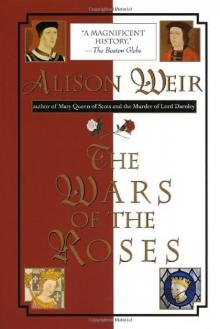 Wars of the Roses
Wars of the Roses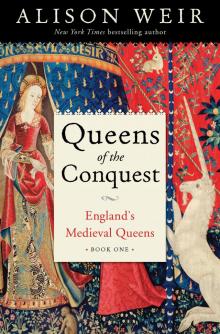 Queens of the Conquest
Queens of the Conquest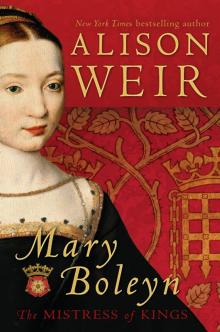 Mary Boleyn
Mary Boleyn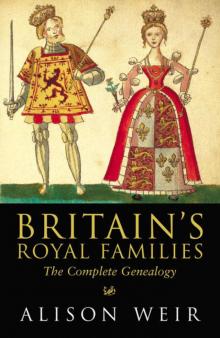 Britain's Royal Families
Britain's Royal Families The Tower Is Full of Ghosts Today
The Tower Is Full of Ghosts Today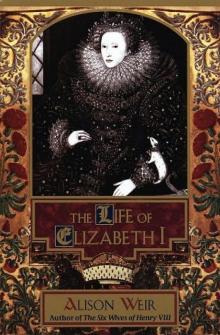 Life of Elizabeth I
Life of Elizabeth I Anne Boleyn A King's Obssession
Anne Boleyn A King's Obssession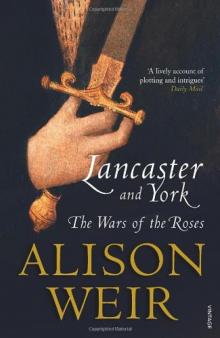 Lancaster and York
Lancaster and York Jane Seymour, the Haunted Queen
Jane Seymour, the Haunted Queen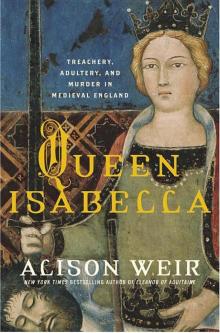 Queen Isabella
Queen Isabella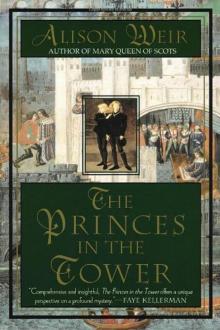 The princes in the tower
The princes in the tower